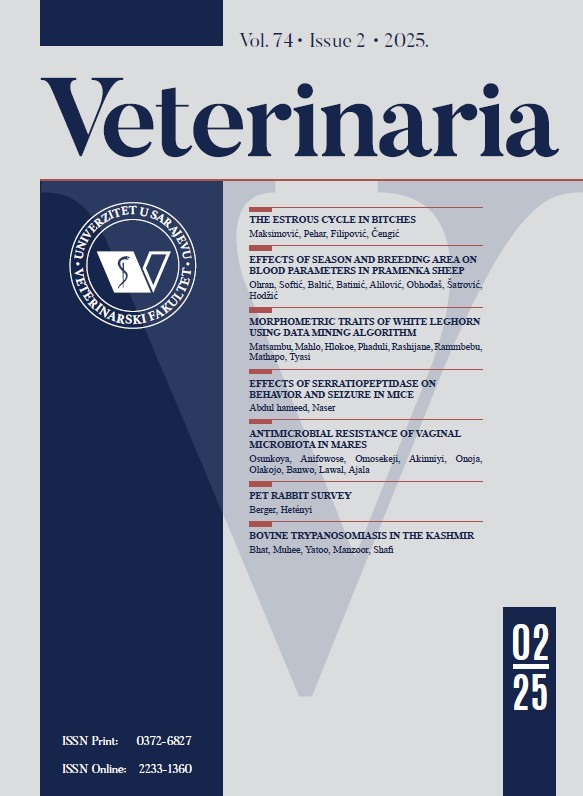Avian chlamydiosis in pheasants (Phasanius colchicus) in Bosnia and Herzegovina
Keywords:
avian chlamydiosis, pheasantsAbstract
Between 2007 and 2008, we carried out a non-selective research of avian chlamydiosis in the wild and cultured pheasants. Of note is this was the first time
avian chlamydiosis was diagnosed in the pheasants in Bosnia and Herzegovina. The samples were provided through the hunting associations during the pheasants-hunting season, and from the pheasant farm in Orasje which is specialized in breeding and releasing pheasants into their natural environment We examined a total of 19 samples of cloacal and oropharingeal swabs of the breed pheasants and 27 wild pheasants by the following diagnostic methods: bacteriological, ELISA test for the detection of antigen, EIA test, and rRT-PCR test. To avoid false-positive results, we first did bacteriological examination followed by testing cloacal samples by ELISA and EIA tests. Samples positive by ELISA and EIA tests were then sent to the reference laboratory in the Friedrich Loeffler Institute in Jena (Germany) for the rRT-PCR detection of Cp. psittaci. Of the total of 46 cloacal swabs of the wild and breed pheasants examined by
ELISA (IDEIA) and EIA (CW) tests for the detection of antigens, eight (17.4%) tested positive; breed pheasants 21.1% and wild pheasants 14.8%. Of the total of eight samples of the wild pheasants that tested positive on ELISA (IDEI) and EIA tests, none was positive by the rRT-PCR method. The aim was to investigate the presence of avian chlamydiosis in pheasants in Bosnia and Herzegovina.
Downloads
Published
How to Cite
Issue
Section
License
Copyright (c) 2020 Edin Šatrović, Emina Rešidbegović, Zijah Hadžiomerović, Lejla Krkalić, Teufik Goletić, Aida Kavazović, Petar Džaja, Mensur Vegara

This work is licensed under a Creative Commons Attribution 4.0 International License.







